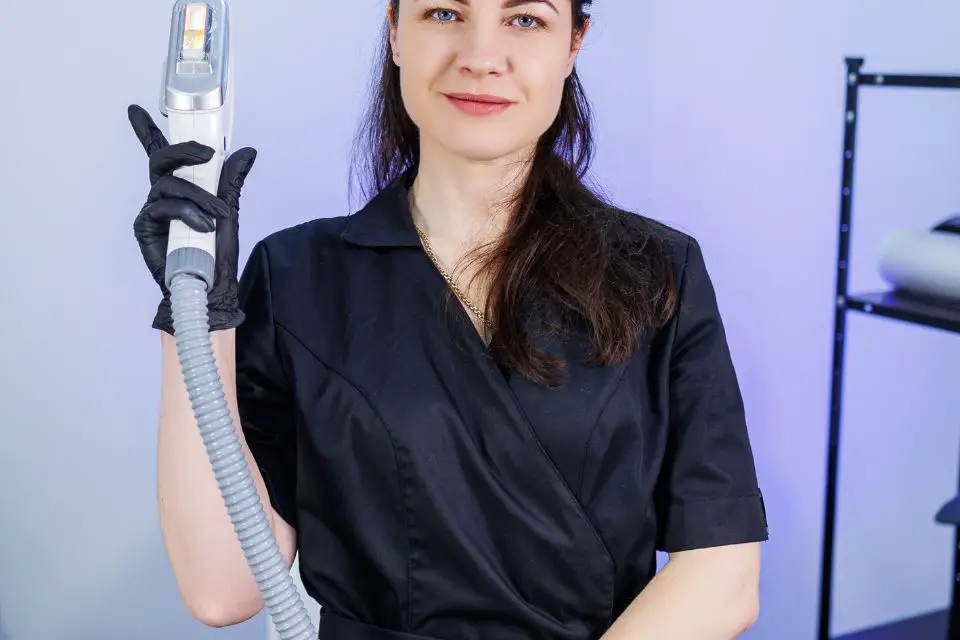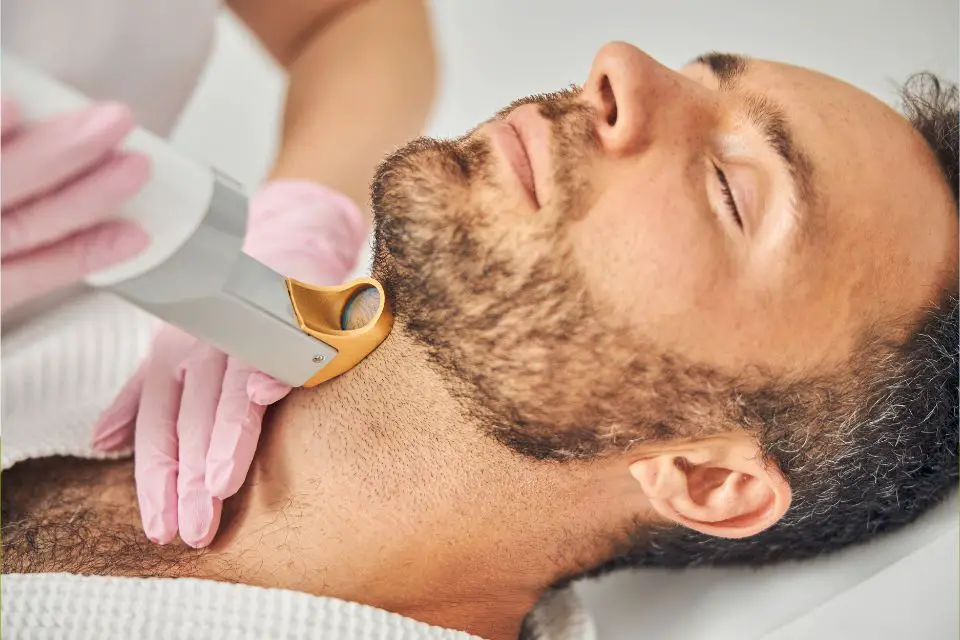Laser hair removal has become an increasingly popular method for achieving smooth, hair-free skin. While it offers a more permanent solution to hair removal than traditional methods, such as waxing and shaving, shedding after laser hair removal can be an unexpected and sometimes confusing experience for patients. Shedding occurs when treated hairs begin to fall out after laser hair removal, which can leave the skin looking patchy and uneven. As a result, patients need to understand what to expect and how to manage shedding after laser hair removal to ensure the best possible outcome.
Definition of laser hair removal
Laser hair removal is a medical procedure that uses laser light to damage and destroys hair follicles. High-intensity light targets the dark melanin in each strand of hair, damaging the follicle and inhibiting future growth. It’s usually done over several sessions because not all coats are in the same growth stage at any given time. After laser treatment, treated hairs will fall out within 1-3 weeks following the session. This shedding can be accompanied by redness or swelling but typically only lasts a few days.
A brief overview of shedding after laser hair removal
Shedding after laser hair removal is a normal process. During the procedure, the hair follicle absorbs the laser’s energy, which causes it to be destroyed. This destroys all active hairs in that area but doesn’t affect any of the coats that haven’t made their way out of your skin. These dormant hairs will eventually make their way out, and this shedding process can last anywhere from one to four weeks post-treatment. The shedding process can vary in intensity depending on everyone’s body chemistry – some may experience very light shedding, while others may experience more intense shedding. It is important to note that this is a natural part of the healing process and should be monitored closely during treatment sessions. Excessive shedding could lead to better results or even complications if appropriately managed by a professional technician. Overall, patients need to follow all instructions their doctor or technician gives during treatment sessions to ensure optimal results without any potential risks or side effects associated with overly aggressive treatments.
Shedding after Laser Hair Removal
What is clearing after laser hair removal?
Shedding after laser hair removal is normal and can vary from person to person. It usually occurs within 1-2 weeks following a treatment session, as the body begins to reject the damaged follicles. During this period, patients may notice small amounts of shedding in areas that have been treated. The shedding is often accompanied by slight itching or redness. Sometimes, it can be noticeable but should dissipate within a few days or weeks. Although shedding after laser hair removal is expected, keeping an eye on any signs of infection or inflammation at the treatment site is essential. If you experience severe pain or swelling, contact your doctor immediately for advice on managing these symptoms. Additionally, if you notice any new bumps or spots around the treatment area post-procedure, consult your doctor for further evaluation and assistance in managing these changes.
What to Expect After Laser Hair Removal
Timeline of recovery after laser hair removal
The shedding process is a normal part of laser hair removal recovery and can begin anywhere from 2-7 days post-treatment. It is important to note that the shedding could start before or after this time frame. The length of time for the shedding process will depend on many factors, such as skin and hair type, treatment area, number of treatments done, and more. During this stage, avoid harsh scrubs or waxing in the treated area. Once the shedding has been completed, which could take up to 6 weeks after the initial treatment depending on the abovementioned factors, you may notice new baby hairs growing in the treated area. This usually starts within 4-6 weeks after initial treatment and should continue for up to 12 weeks following your laser treatments until full results are seen. Full effects typically occur with at least 3-5 treatments between 4-8 weeks apart, depending on your provider’s recommendation.
Post-treatment care tips for shedding
Taking proper care of your skin after laser hair removal treatments is essential. Here are some post-treatment care tips to help you minimize shedding:
1. Immediately following the treatment, avoid scrubbing or using abrasive cleansers on the area, as this can irritate and inflame the skin, making it more prone to shedding. Instead, use a gentle cleanser like Cetaphil or Aveeno that contains no fragrances or exfoliating beads.
2. To reduce swelling and inflammation, apply a cold compress for 10 minutes every few hours for up to 48 hours after treatment. You can also take an over-the-counter anti-inflammatory such as ibuprofen if needed.
3. Wear loose clothing made from natural fibers like cotton or linen to keep your skin cool and dry while allowing it to breathe freely between treatments. Avoid tight clothing or garments made from synthetic polyester that may trap heat and moisture against the skin surface, promoting irritation and hair shedding in treated areas.
Potential side effects of laser hair removal
Although laser hair removal is safe, some may experience side effects such as shedding. The shedding usually begins within the first week after treatment and can last anywhere from a few days to several weeks. During this period, it’s normal for treated areas to feel like they have been sunburned or lightly scratched with sandpaper. Mild swelling and redness are joint but should subside quickly. Shedding is expected because the heat generated by the laser weakens existing hairs so that they eventually fall out of their follicles. It’s important to remember not to pull at any fallen hairs as this could damage the skin or delay healing time. To reduce discomfort and speed up healing, patients should avoid hot showers, saunas, swimming pools, and other activities that involve heated water until the skin has healed completely.
When to seek medical attention after laser hair removal
It is normal to experience some shedding in the days and weeks after a laser hair removal session. This usually manifests as clusters of hairs released from the treated area, resembling plucking. If there are any signs of redness, swelling, or blistering on the skin following treatment, it is essential to contact a doctor immediately for further instructions.
More severe side effects during and after laser hair removal can include itching, burning sensations that persist for more than an hour post-treatment, acne-like breakouts at the site of treatment due to blocked pores, changes in pigmentation around the treated area such as darkening or lightening of the skin’s color, infection due to improper care after treatment or weak immune system response. In these cases, it is highly recommended to seek medical assistance right away as these could be signs of an allergic reaction which must be addressed quickly with medication or other treatments prescribed by a doctor.
However, if symptoms persist beyond seven days after receiving laser hair removal treatment, it is best to consult a healthcare professional regardless of severity. The doctor can advise on how best to manage post-treatment care and answer any questions regarding potential risks associated with this procedure.

Factors that Affect Shedding After Laser Hair Removal
Skin type and hair color
People with different skin types and hair colors respond differently to laser hair removal. Those with dark skin or light-colored hair may find their skin is more sensitive, resulting in excessive shedding after the treatment. Darker skin tones are especially prone to this side effect, as lasers can target melanin in the skin, leading to further disruption of the follicle and additional shedding post-treatment. Blonde, grey, white, and red hairs may not be affected by laser treatments as they lack pigment and cannot absorb energy from the laser beam. People with these hair colors should also know that they may require more treatments than darker hair due to their lower absorption rate. It’s important to discuss your case with your dermatologist before starting any procedure to get an accurate assessment of what to expect afterwards.
Treatment area
The shedding period after laser hair removal is natural and can start any time from 3-14 days post-treatment. Depending on the body area, it can take 4-6 weeks for all hairs to fall out. During this time, extra care should be taken in caring for the site to reduce irritation and ensure optimal results. Keeping the area clean and dry following treatment is essential, as bacteria may cause an infection that could lead to scarring or other skin damage. Gentle cleansing with warm water and a mild soap should be performed once daily but no more than twice daily. Avoid scrubbing or using exfoliating products in the treated area, as this can irritate the skin further. Regularly applying an emollient cream or moisturizer will help keep the skin hydrated while allowing it to heal faster. To minimize discomfort associated with shedding, wear loose clothing such as cotton t-shirts or shorts over treated areas whenever possible during this period because tight clothing may rub against tender follicles and make them inflamed or irritated. Always use sun protection if going outside; sunscreen should be applied every 2-3 hours when exposed to direct sunlight to reduce inflammation and minimize the risks of hyperpigmentation. C. Laser type and settings

Number of treatments received.
The number of treatments needed for laser hair removal to be effective depends on several factors, such as the area being treated, the type and color of hair, and the individual’s skin tone. Generally, light-colored, or fine hairs require more treatments than darker or coarse hairs. On average, most people need 5 to 8 sessions to achieve permanent results. However, some individuals may only need 3 or 4 treatments, while others may require up to 10 sessions, depending on their circumstances. It is important to note that additional maintenance treatments may be required after completing the initial series of laser hair removal sessions. These follow-up appointments help maintain long-term results by targeting any new growth that might occur in between treatments. Maintenance appointments are typically scheduled every six months for optimal effectiveness. Furthermore, it is also recommended that post-treatment care, such as avoiding direct sun exposure and wearing sunscreen, be considered to maintain desired results over time. In short, the exact number of laser hair removal treatments needed will vary from person to person based on multiple factors; however, a typical patient needs 5-8 treatment sessions with occasional maintenance visits afterwards for best results.
Pre-treatment preparation
Before beginning a laser hair removal treatment, taking specific steps to prepare the skin for the best results is essential. Those preparing for their first session should ensure they have taken all necessary safety precautions before participating in any procedure.
Most spas or clinics may require patients to shave the treatment area before arriving for their appointment. This helps ensure that only the desired hair follicles are targeted with the laser, not any surrounding skin. Additionally, waxing, tweezing, or depilatory creams should be avoided two weeks before treatments as this can affect how well a laser can target an area.
It is essential for individuals receiving laser hair removal treatments to avoid tanning as much as possible to reduce any risk of burns during sessions. Sunburn increases sensitivity which could lead to pain during treatments and darken hyperpigmentation spots on those with darker skin tones. It’s best practice to wear sunscreen every day when outside and to stay out only a short time without shade or adequate protection from UV rays.
Tips for Managing Shedding After Laser Hair Removal
Managing shedding after laser hair removal can ensure the best possible outcome. One effective way to work to alleviate is through exfoliation and moisturization. Exfoliating the treated area gently with a loofah or gloves can help remove dead skin cells and promote the shedding of treated hairs. Moisturizing the treated area with a fragrance-free lotion can also help soothe discomfort or itching associated with shedding. Additionally, it is essential to avoid tight clothing and hot showers, which can irritate the skin, and to stay out of the sun and use sunscreen to protect the skin from UV rays. By following these tips for managing shedding after laser hair removal, patients can help minimize discomfort or inconvenience and achieve the best possible results from their treatment.
Related Reading: Does hair fall out after laser hair removal?
Conclusion
Shedding after laser hair removal is a regular and temporary part of the treatment process. While it may be uncomfortable or inconvenient, there are steps patients can take to manage to shed and promote optimal results. Patients can make informed decisions and ensure the best possible outcome by understanding what to expect after laser hair removal, factors that may affect shedding, and tips for managing shedding. It is also essential for patients to follow post-treatment care instructions and to seek medical attention if any unusual or severe symptoms occur. With proper care and attention, laser hair removal can be a highly effective and long-lasting solution for achieving smooth, hair-free skin.



